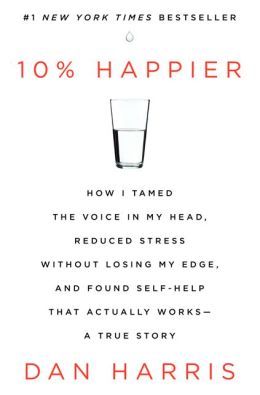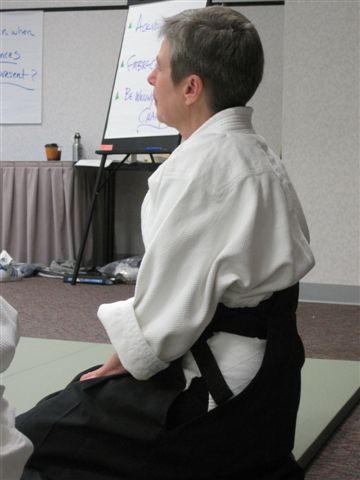Did you love Tracie Shroyer's guest post earlier this month on Finding Center in Back to School?
Tracie's post--and your response to it--encouraged me to revisit the topic(s) of centering, grounding, mindfulness, and presence in a series of DIY posts, whose purpose will be to answer these questions:
- How do I actually do it?
- How do I get centered and become grounded, more mindful and present in life's difficult moments.
- As Dan Harris puts it in his new book, 10% Happier: How I Tamed the Voice in My Head, Reduced Stress Without Losing My Edge, and Found Self-Help That Actually Works--how do I know when I've achieved it?
Today I offer a review and a few quotations from Dan's book, which I received from a friend a few  weeks ago and could not put down. I especially appreciated the fact that Dan began his practice of meditation "kicking and screaming."
weeks ago and could not put down. I especially appreciated the fact that Dan began his practice of meditation "kicking and screaming."
As a TV news anchor for ABC, he had opportunities to interview renowned teachers and gurus, including Eckhart Tolle, Deepak Chopra and His Holiness The Dalai Lama. Dan's humorously detailed skepticism was eventually replaced with wonder and a dedicated practice of his own, which led him to describe his changed way of being as 10% happier.
From 10% Happier:
"I ... learned that you didn't need to wear robes, chant Sanskrit phrases, or listen to Cat Stevens.... The instructions were reassuringly simple:
- Sit comfortably... Just make sure your spine is reasonably straight....
- Feel the sensations of your breath as it goes in and out. Pick a spot: nostrils, chest, or gut. Focus your attention there and really try to feel the breath....
- This one, according to all of the books I read, was the biggie. Whenever your attention wanders just forgive yourself and gently come back to the breath.... The whole game is to catch your mind wandering and then come back to the breath, over and over again."
Dan's prescription reinforced everything I've learned about meditation and try to do in my own practice and bears repeating. Simply:
- Sit quietly, comfortably.
- Feel the breath coming in and out of the body.
- When you notice the mind wandering, gently come back to the breath.
 It takes courage, time and repetition to develop a new habit, as it does for any new endeavor, exercise, or change in routine. The book put it into language I could understand:
It takes courage, time and repetition to develop a new habit, as it does for any new endeavor, exercise, or change in routine. The book put it into language I could understand:
I didn't like it per se, but I now respected it. This was not just some hippie time-passing technique.... It was a rigorous brain exercise: rep after rep of trying to tame the runaway train of the mind.... Wrestling your mind to the ground, repeatedly hauling your attention back to the breath in the face of the inner onslaught required genuine grit. This was a badass endeavor.
As an Aikido student, voice student, yoga student, I totally get that if you want to get better at something, you do your techniques, your scales, and your postures over and over again until they lead you to proficiency, effortlessness, and presence. And so I strongly connected with his reference to meditation as "a rigorous brain exercise: rep after rep of trying to tame the runaway train of the mind...." I may not achieve Nirvana. And, the practice is an end in itself.
Stay tuned for more posts on centering and mindfulness practices in the weeks ahead! In the meantime, please send me your questions. What would you like to know?



Let’s discuss this post in the comments
Note: you don’t need to “log in” or “sign up” to comment. Simply enter your comment, then under the “sign up with Disqus” field enter your name. Then enter your email address and click the checkbox (that will appear) with the label “I’d rather comment as a guest.”